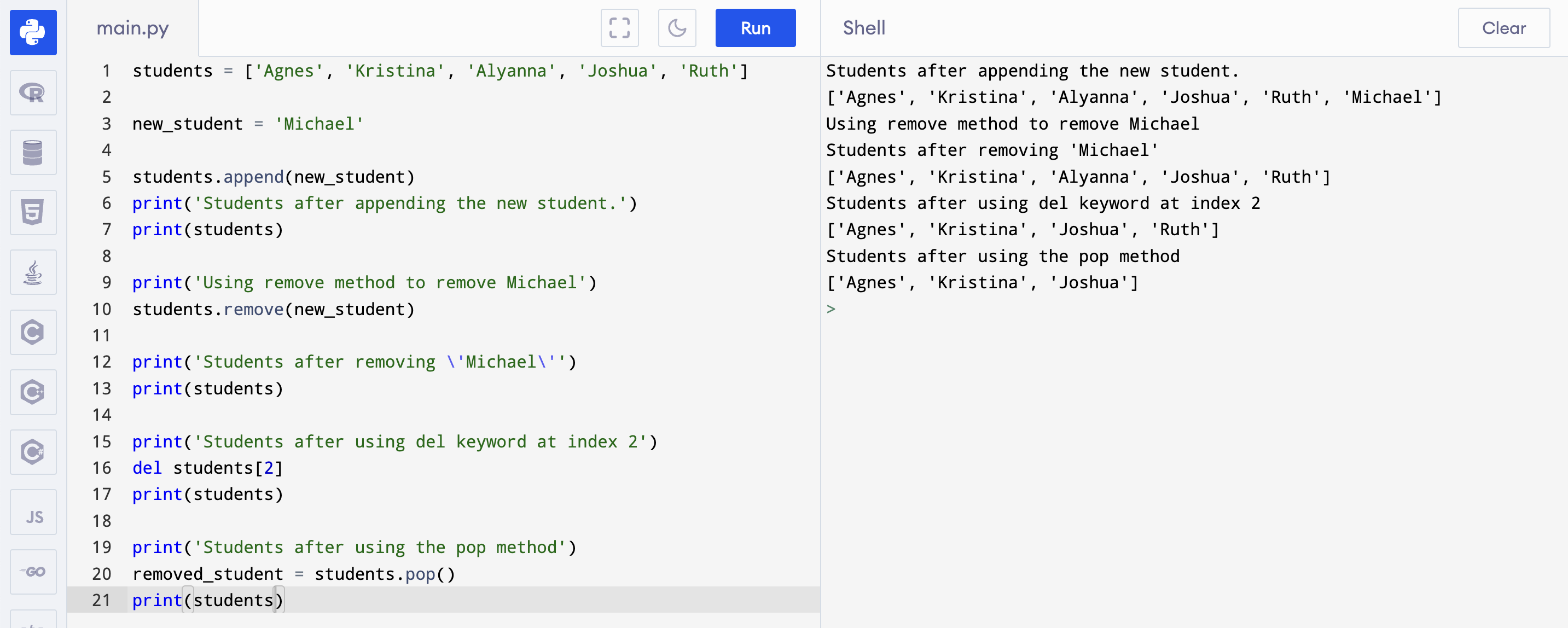Collection Types
Estimated time to read: 2 minutes
In this course, we will explore two of the most common collection types, List amd Tuple.
List
In Python, a list is a built-in data structure that allows you to store and manipulate a collection of values. It is an ordered collection of items, where each item can be of different data types such as integers, floats, strings, or even other lists.
Here are some key features of lists in Python:
Creating and Accessing an Element from a List
Creating a list in python can be done in two ways, by using the angle brackets [] or by using the list() constructor.
In this course, we will be commonlu deal with python using square brackets.
Let's say we'll create a list of students:
| Python | |
|---|---|
Elements in a list is numbered by indexes. For the above example, we have:
| Element | Index |
|---|---|
| 'Agnes' | 0 |
| 'Kristina' | 1 |
| 'Alyanna' | 2 |
| 'Joshua' | 3 |
| 'Ruth' | 4 |
To access the elements in a list, we use the square bracket like this:
Adding Element to a List
We can add a data or element to a list using append method. On the previous article, I mentioned that everything in python
are objects. Objects have methods1. And list has a method called append. For example, if we want to add a name to the students list,
we do it like this:
| Adding element to a list | |
|---|---|
If we run it in the online compiler

Removing an Item from a List
There are several ways of removing an item or items from a list in python.
1. Using the remove method

Here we used the remove method of a list. This method removes the first occurence of the object we passed as parameter from the list
2. Using the del keyword
The del keyword can be used to remove an item from a list by its index. For example:
| Removing item from a list using del keyword | |
|---|---|
3. Using the pop method
The pop() method removes and returns the item at a specific index. If no index is specified, it removes and returns the last item in the list. For example:

Here we didn't specify the index so the pop method removed the last element.
I assigned the result of the pop method to a variable in the example, just for the sake of demonstrating that it returns the object that was removed so you can use it for later.
-
A function that belongs or is part of an object. ↩